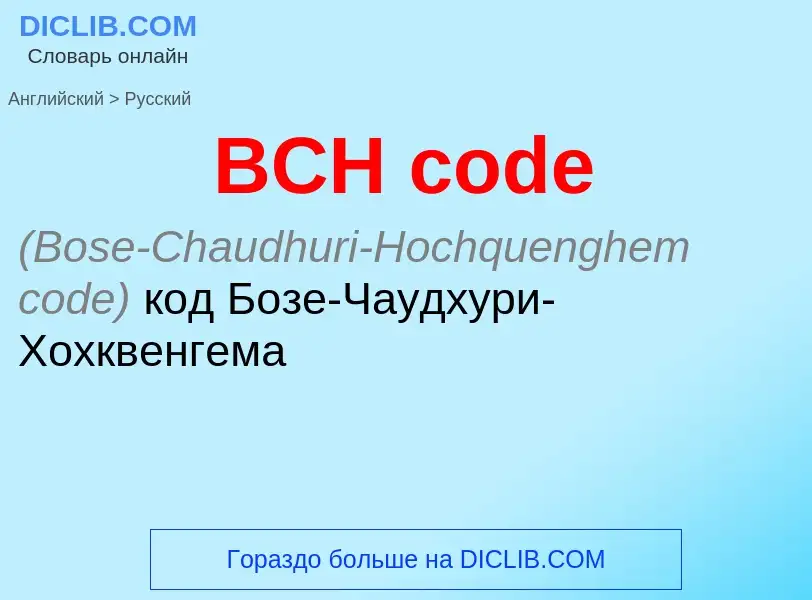Translation and analysis of words by ChatGPT artificial intelligence
On this page you can get a detailed analysis of a word or phrase, produced by the best artificial intelligence technology to date:
- how the word is used
- frequency of use
- it is used more often in oral or written speech
- word translation options
- usage examples (several phrases with translation)
- etymology
BCH code - translation to English
Definition
Wikipedia
In coding theory, the Bose–Chaudhuri–Hocquenghem codes (BCH codes) form a class of cyclic error-correcting codes that are constructed using polynomials over a finite field (also called Galois field). BCH codes were invented in 1959 by French mathematician Alexis Hocquenghem, and independently in 1960 by Raj Chandra Bose and D.K. Ray-Chaudhuri. The name Bose–Chaudhuri–Hocquenghem (and the acronym BCH) arises from the initials of the inventors' surnames (mistakenly, in the case of Ray-Chaudhuri).
One of the key features of BCH codes is that during code design, there is a precise control over the number of symbol errors correctable by the code. In particular, it is possible to design binary BCH codes that can correct multiple bit errors. Another advantage of BCH codes is the ease with which they can be decoded, namely, via an algebraic method known as syndrome decoding. This simplifies the design of the decoder for these codes, using small low-power electronic hardware.
BCH codes are used in applications such as satellite communications, compact disc players, DVDs, disk drives, USB flash drives, solid-state drives, quantum-resistant cryptography and two-dimensional bar codes.


![A portion of the "[[Zimmermann Telegram]]" as decrypted by [[British Naval Intelligence]] codebreakers. The word ''Arizona'' was not in the German codebook and had therefore to be split into phonetic syllables. A portion of the "[[Zimmermann Telegram]]" as decrypted by [[British Naval Intelligence]] codebreakers. The word ''Arizona'' was not in the German codebook and had therefore to be split into phonetic syllables.](https://commons.wikimedia.org/wiki/Special:FilePath/Ztel2.jpg?width=200)
